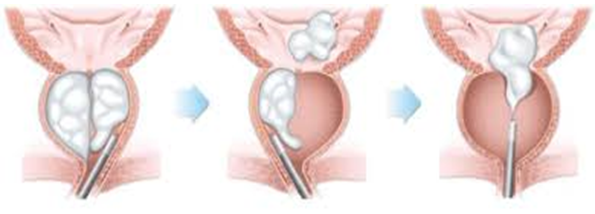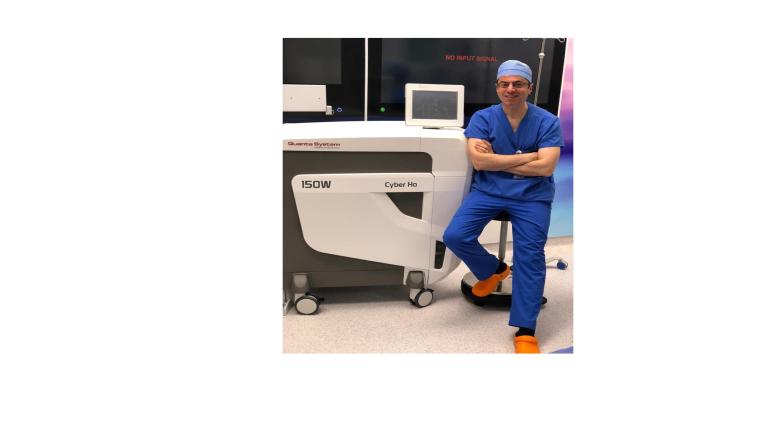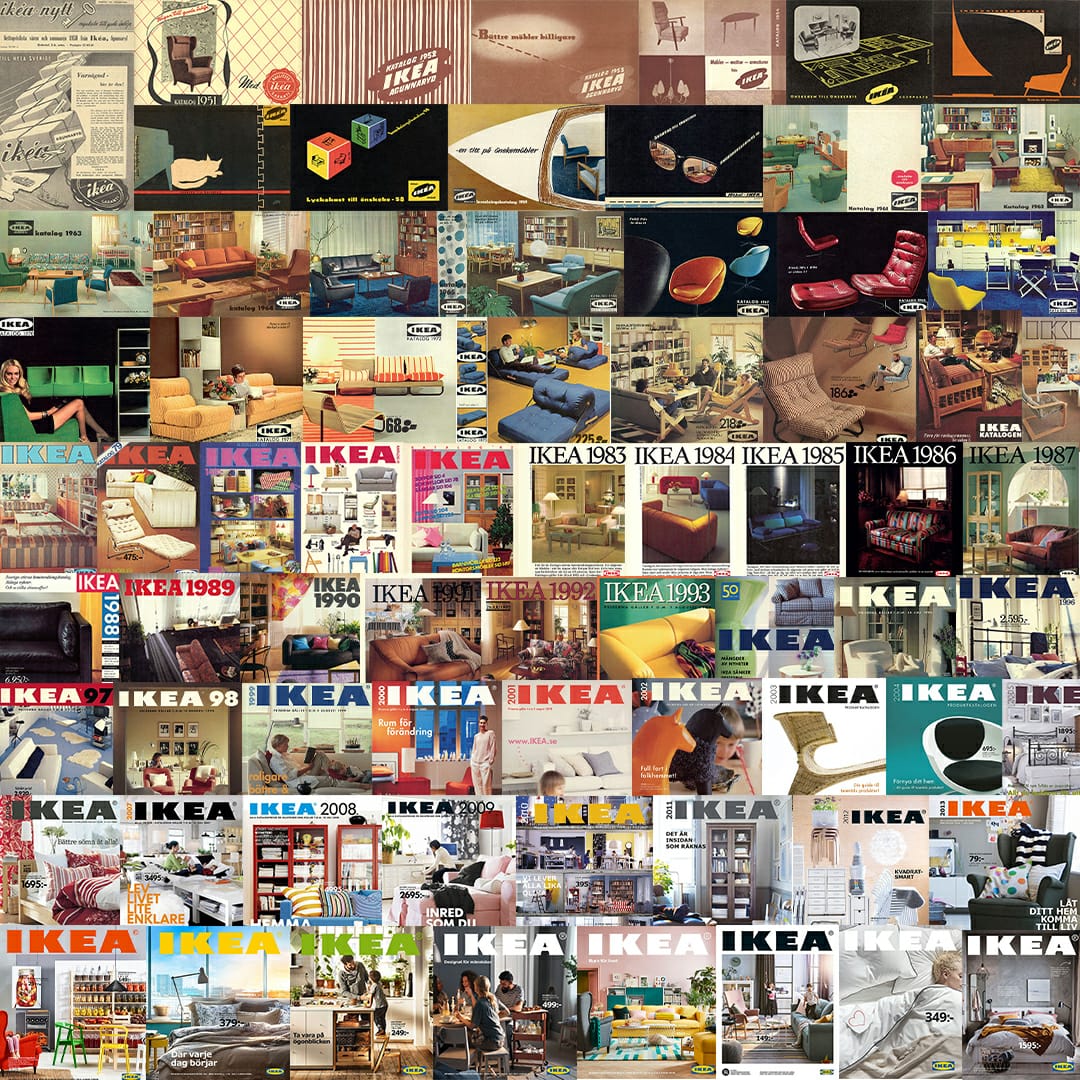Dr Ahmed Qteishat, Consultant urological surgeon
MBBS(Hons), MRCS(Glasg), FEBU, FRCS(Urol), JBU, ABU
Over the past two decades, the application of laser surgery in urology has gained popularity in treating a variety of conditions. This is because lasers are less invasive and have greater precision and accuracy. They also result in less bleeding due to the coagulation effect on vessels and as a result the recovery time and hospital stay for patients is reduced and in many cases the procedure may be done in an outpatient setting. With the advancements in technology, lasers have become safer especially in high risk elderly patients where conventional surgery may not be an option.
The scope of application for laser surgery in urology is vast which includes treatment of patients with benign prostatic hyperplasia, bladder tumors and upper urinary tract urothelial tumors involving the ureters and/or kidneys, urolithiasis, urinary tract strictures and also lesions of the external genitalia.
There are different types of lasers available on the market with different properties each for a specific application. Lasers may either have a continuous or pulsed wave and have different wavelengths which determines the depth of penetration of the laser beam. The Holmium laser (Ho:YAG) is the most commonly used laser and is the most versatile and can be used to treat urinary tract stones in either the kidneys, ureters or the bladder in addition to treatment of benign prostatic enlargement by either enucleation or vaporization. HoLEP is a procedure where the prostate is enucleated using the Ho:YAG laser and this has been shown to be superior to other forms of lasers when treating large prostates over 80gm. Vaporization using the Ho:YAG laser is not widely used due to insufficient data regarding the long term outcomes and most surgeons would prefer to use the green light laser which is also known as the KTP:YAG for prostate vaporization. One of the disadvantages of the KTP:YAG laser is that it cannot be used to treat urinary tract stones and is used only for prostate vaporization. When comparing Ho:YAG to KTP:YAG laser, the Holmium (Ho:YAG) laser has been shown to be superior to the KTP:YAG laser with a greater improvement in the strength of the urinary flow (Qmax), greater reduction in the symptom score (IPSS) and lower rates of repeat procedures at 5-10 year follow-up after surgery(1). Another study compared the results of the Holmium laser (Ho:YAG) to the green light (KTP:YAG) in treating patients with benign prostatic enlargement and chronic urinary retention and the study found that 99% of patients who underwent HoLEP using the Ho:YAG laser were catheter free compared to 74% who underwent PVP using the KTP:YAG laser(2). Another study looked at the quality of life score for patients undergoing either HoLEP or PVP and after 5 years (60 months of follow-up), they found that the HoLEP group did better(3).

One of the most common methods of treating kidney, ureteric and bladder calculi is endoscopic laser stone fragmentation. This has been possible with the advancement of the new generation of ureteroscopes which provide better vision and flexibility which allows easy reach of the stones within the urinary tract. The Holmium laser (Ho:YAG) is the laser used to treat urinary tract stones and is the preferred choice for patients that would like to be rendered stone free in a single session. This is especially true for patients that have multiple stones in the kidney or patients that have a total stone volume up to 2cm. Large bladder stones traditionally used to be treated by open surgery through a lower abdominal incision and opening the bladder to extract the stone; nowadays this can be achieved through an endoscopic approach and fragmentation of the stone using the Holmium laser. This has the advantage of reduced hospital stay, quicker recovery, reduced post-operative pain and a reduction in the time needed for a urethral catheter.

Transitional cell carcinoma (TCC) is a cancer that effects the inner lining of the bladder, ureters and renal pelvises. The traditional approach for treatment of ureteric or renal pelvic TCC was a radical nephroureterectomy which required removal of the kidney, ureter and part of the bladder. Although this is still the case for high grade cancers; nowadays, low grade upper urinary tract TCC can be managed endoscopically and the tumor can be ablated using the Holmium (Ho:YAG) laser. In fact, this is the recommended approach as outlined in the European, American and British guidelines as this helps preserve renal function and is especially important in patients that have impaired renal function due to diabetes or high blood pressure or by any other cause.
In summary, laser surgery plays an integral role in the treatment of a number of urological conditions and has become a corner stone in every modern urological department.
At Abdali Hospital we are happy to announce that we have recently received delivery of a 150W holmium laser machine which is the most powerful and up-to-date holmium laser machine available on the market. This is the first machine to be delivered within Jordan and amongst the first within the Middle East. This shortens the operative time and makes the procedure easier for the surgeon to perform. At Abdali Hospital we are proud to offer state-of-the-art health care to all our patients which is only possible by having experienced doctors who have undergone training in world renown centers while providing them with the right atmosphere and equipment in order for them to practice in the best possible environment.
- HoLEP: the gold standard for the surgical management of BPH in the 21st John Mickalak, David Tzou, Joel Funk, Am J Clin Exp Urol 2015;3(1):36-42
- Holmium laser enucleation (HoLEP) and photoselective vaporization of the prostate (PVP) for patients with benign prostatic hyperplasia (BPH) and chronic urinary retention. Christopher Jaeger, Christopher Mitchell, Lance Mynderse, Amy Crambeck. BJU International 2015;115(2):295-299
- Quality of life after photo-selective vaporization and holmium-laser enucleation of the prostate: 5-year outcomes. Inyoung Sun, Sangjun Yoo, Juhyun Park, Sung Yong Cho, Hyeon Jeong, Hwancheol Son, Seung-June Oh, Jae-Seung Paick, Min Chui Cho. Nature Scientific Reports 9(1): 8261 (2019)
المصدر : https://wp.me/p70vFa-DBm



















